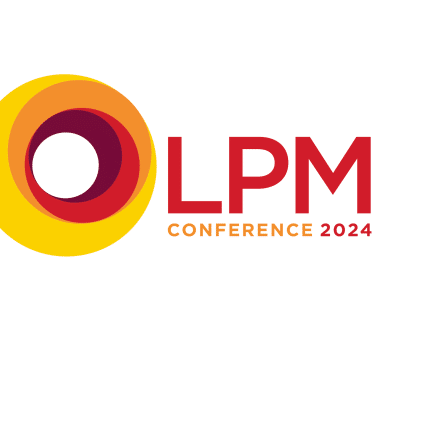
Remaining competitive with a digital operational strategy
Amy Bruce, marketing manager at Osprey Approach, reflects on client-centricity and being a ‘digital-first’ firm – insights that were explored during the Build Better Habits webinar series.
For the first episode of Osprey Approach’s Build Better Habits webinar series, I was joined by Cecile Papin, partner lead at Coadjute, David Ricketts, head of marketing at Quiss, and Alex Simons, new business manager at The Law Factory. Our expert panel shared its practical tips and valuable insight into how law firms can successfully implement a digital strategy, its benefits, and how to maximise value.
What does a ‘digital-first’ mindset mean?
I began by asking our panellists what a digital-first mindset means for modern law firms, and they all agreed it’s not about specific technologies or digital tools, but always about the people – employees and clients – that use them, with Cecile commenting that, “digitalisation is an organisational change that is related to your people and processes.”
David shared the two things that digitally successful law firms are focusing on, namely, “the drive for simplicity and putting the customer and the centre of what they’re doing.
“Creating a customer centric culture that aims to provide digital solutions to any current challenge or opportunity is massively important when the way clients are engaged continue to dramatically change.”
Because a digital-first mindset helps to connect a firm’s people and processes, it then ensures practices can take advantage of the opportunities that technology presents, as Cecile explained: “Technology helps firms to run a more efficient, productive and streamlined operations that helps you stay ahead of the competition.”
What challenges does being ‘digital-first’ help SME law firms overcome?
David highlighted the top six challenges that SME law firms face that a digital-first mindset, and the right technology, can help overcome – operational efficiency, scalability, innovation, staff retention or recruitment, managing client expectations, and profit erosion.
Alex added that: “when time is money, it’s easy to negatively impact your bottom-line if your operational processes are inefficient and your overhead costs are high,” and warned that, “if you’re constantly playing catch-up because your costs are spiralling, that’s when people become stressed and that’s when you start to lose good talent.
“There are many things that a digital-first mindset can help firms to overcome, but for me it’s the ability to free up time to avoid stress for employees.”
Law firms with a digital-first strategy can more easily connect their employees, clients, and processes to ensure an effective and scalable operation that can provide a valuable, but profitable service. To implement – or optimise – a digital strategy, it’s important for firms to revaluate their current processes, firm culture, and existing habits.
Cecile explained how digitalisation helps to refocus goals and priorities: “The process of being digital-first means you must start by taking a deep look at your current processes to establish what can be automated and transformed. That enables you and your team to collectively realign and refocus on priorities and goals.
“Then, with your new digital tools, you can begin to measure the benefits and progress of digitalisation through a variety of KPIs.”
Six habits law firms should adopt
The panel agreed that modern law firms should focus on the following habits when implementing a digital operational strategy to reap the maximum benefit:
- Communicate your vision. To successfully implement any new business strategy or digital tool, David said that responsibility and ownership are key for success and that “every firm needs to have a clear vision from the leadership team.” This is so that they understand the benefits and the long-term implications of the technology for their firm, making it easier to choose the right partner and solution, and measure success.
- Be client-focused. Always have the client in mind when implementing new processes or digital tools. This requires an understanding of clients’ needs, knowing what drives them, and how firms can provide value.
- Keep it simple. David explained that it’s important not to, “overcomplicate the relationship between technology and commercials.” Ensure the tools invested in will help the firm to fulfil its vision and business goals, and meet your clients’ and employees’ needs, without adding additional layers of complexity.
- Protect your data. Law firms are a high-risk industry for cybercrime, so when digitalising your operations ensure that it protects both the firm’s and clients’ data. Cecile advised to “have data security at the heart of everything you do. We know the impact that a security breach can have.”
- Standardise your processes. Before investing in any new software, law firms should start by reviewing and documenting existing processes so it’s clear how the digital tools will help to standardise, automate, and enhance. Alex commented that, “case management software is a great tool to make daily tasks easier for you, but you need to get your processes documented.”
- Stay on system. Law firms will only achieve a return on their software investment if its capabilities are fully utilised. Alex stressed how important it is that law firms involve their team at the beginning of the process to ensure they’re confident using the system: “Take the time to learn the capabilities and take advantage of training, which is free for Osprey users. That way you make sure you’re using what you’re paying for every month.”
Improving tech utilisation
A law firm’s culture impacts software adoption because it determines the relationships and attitudes towards change, experimentation, success, and failure – a view echoed by Cecile, who commented that, “it’s important to establish a culture of innovation within a law firm. You have to assess how the firm will react during periods of experimentation and which structures, behaviours, and goals must be in place to enable innovation.”
Without utilisation of technology across the firm it’ll be impossible to maximise returns, as David explained: “Often, firms have 80% of people who adopt technology and then 20% who are laggards – they still do things the ‘old way’ – and that’s where you’ll have inefficiency problems. You’ve got to have a clear strategy to increase tech utilisation. You must also have people leading the way, have ownership of the strategy, and effective communication with your team.”
Implement digital-first business habits for long-term success
A common theme throughout our digital habits episode is the importance of connecting a firm’s people, processes, and technology. A clear vision and effective firm-wide communication will ensure firms reap the benefits that legal technology can provide while also maximising returns on investments.
Effective operational habits create freedom to focus on the bigger picture and wider goals. We’ve outlined four fundamental habits that a modern law firm should adopt for long-term success.
We’ve covered all four habits in our Build Better Habits webinar series, which is now available to watch on-demand.
Amy Bruce is marketing manager of Osprey Approach, which provides a complete practice and case management software solution to high-street and multi-branch law firms. With over 30 years’ experience in the legal software sector, Osprey’s software solution and dedicated partnership helps make running a law firm easier.




